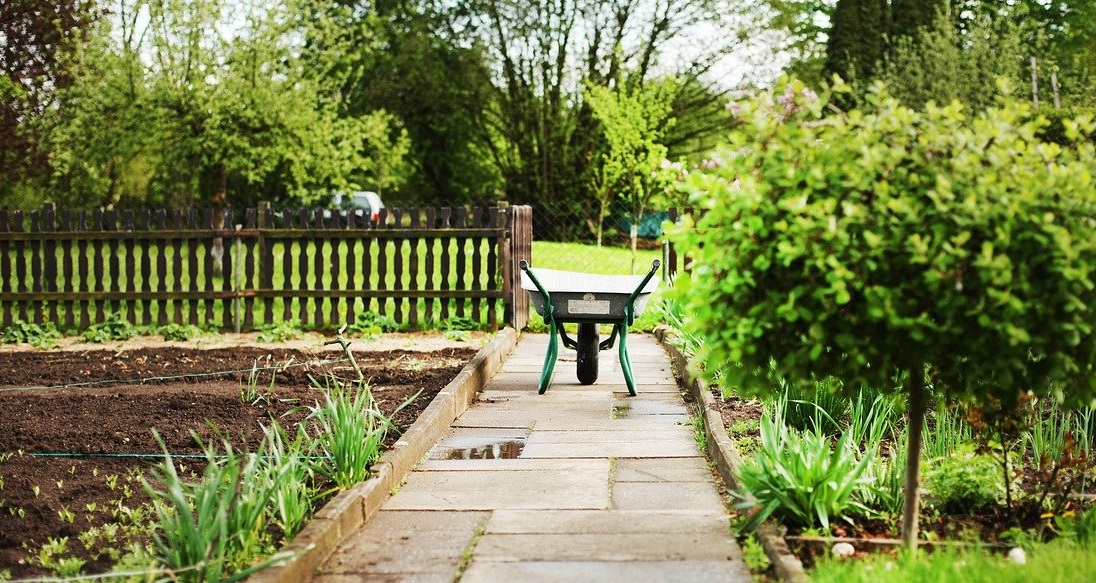I enjoy gardening. I love being outdoors. I feel a sense of accomplishment when a plant makes it through the winter and comes back, healthy, and bigger than last year. And heck, I just love getting dirty! But if I’m not careful, just like with the first snow shoveling in the Fall, I can easily hurt myself.
Over the years I’ve found a few strategies that help my body out. And discovered that one of my all-time favorite gardening tools is something you don’t get at the garden center.
1) Ease into It
It’s standard advice to warm up and ease into a workout. If you run, you start easy. You might walk gently for a mile to warm up your muscles and joints before you start to jog. And then you might jog easily for a while before you’d do any faster running.
That makes sense. Take off running at full speed when your body’s cold and you’re more likely to pull something. Especially if you’re getting older (like I am).
Treat gardening as a workout. Because it is. Don’t dive right in and do strenuous tasks straight away. Start with easier tasks and warm up your muscles and joints before doing the more physically challenging work.
2) Change It Up
Gardening involves many different types of tasks—raking, sweeping, weeding, digging, planting, pushing a wheelbarrow, watering, and trimming—to name a few.
Try rotating through several different tasks in an hour instead of going at one task the whole time.
No matter how well you’re using your body to do a given task, it puts certain stresses on your body. Rotate through different tasks and you change up the stresses on the body.
3) Come Up for Air
A lot of gardening work involves bending over (to shovel, hoe, or rake) or squatting (to weed or plant). Don’t stay down too long.
Every couple of minutes stand up. Completely. Stretch. Look out at your garden. Then get back down to work again. You’re made to move. But you often get into positions and stay there too long.
4) Take Your Time
Rushing through any task typically causes you to use more muscle tension than is appropriate for the situation. Slow down and bring a bit of attention to the act of gardening itself instead of being intently focused on getting it done as soon as possible.
Bringing your attention to how you’re doing what you’re doing allows you to notice when you might be using more muscular effort than necessary to pull up that weed or that you’re twisting yourself in a strange and uncomfortable way or that you’re bending from the waist instead of your hip joints.
It’s only when you notice you’re doing things that aren’t good for your body that you can choose to do them differently.
5) Take Breaks
Think of gardening as a new workout (after all you haven’t been doing it since last Fall and you need to get into gardening shape).
If you were new to exercising at the gym would you jump in and do a three-hour workout right from the start? Probably not. Yet, you often jump in and go out and garden for two hours the first time without a second thought—and then pay for it!
At the beginning of the season break up your gardening into short chunks (20—30 minutes). Work up to longer chunks over the season.
Over the years, through experimentation (and pulled muscles), I know that at the beginning of the season, I need to start with 20 minutes of gardening and then take a short break before continuing. Over the season I gradually work up to a longer time. But I know my limit is around 45 minutes.
6) My Favorite Gardening Tool
And that leads me to my all-time favorite gardening tool: my kitchen timer!
I’ve got a small digital timer that fits into my pocket. I set it for 20 minutes at the beginning of the season or late in the season it’s usually 45 minutes. When it goes off, I stop.
I take a physical break. But just as importantly, I take a mental break. Because I know from experimentation that I can only be paying attention to how I’m gardening for so long. And then I can easily slip into the gotta-get-er-done mode. That’s usually where I hurt myself. I did just that a few years back spreading mulch.
Do you have a favorite gardening tip? Share it in the comments below. I’d love to hear about it.
Image by andreas160578 from Pixabay



